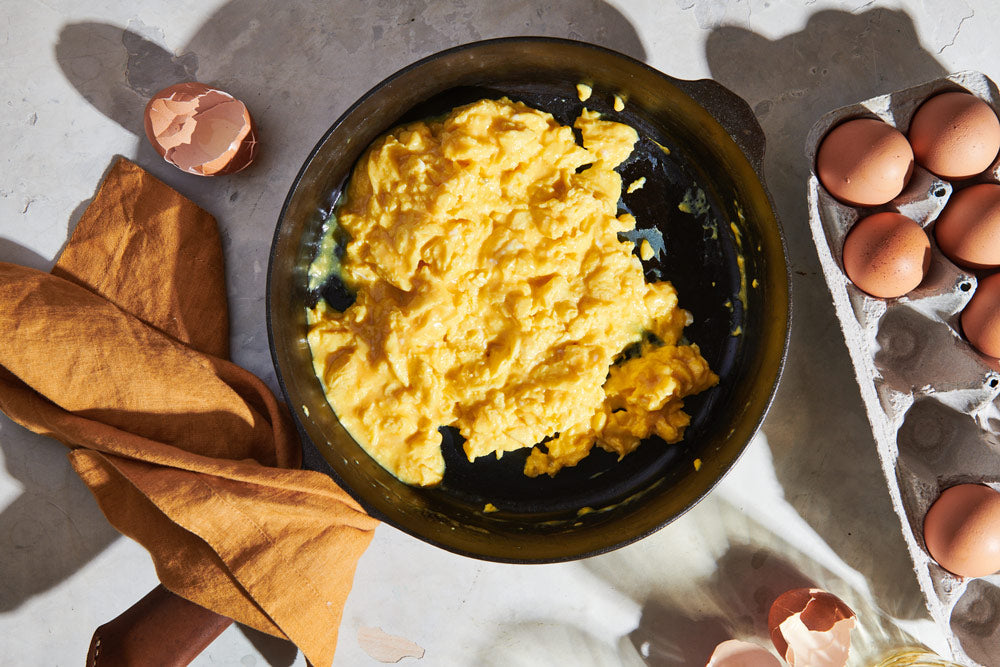The difference between dry, squeaky scrambled eggs and soft, melty scrambled eggs is like the difference between a fifth-grade orchestra and the London Philharmonic: both produce music, but only one can take you to a higher state of bliss (unless, of course, your fifth grader is the one making the music...or the eggs).
After years of experimentation with dozens of techniques, we’ve found the best combination for achieving scrambled egg Nirvana: a cast iron skillet and patience. The skillet does half of the work: We first load the eggs into a cold pan, then set it over a moderately low flame—the cast iron’s slow heat distribution is an asset, in this case, gently warming the egg mixture and preventing any scorches or dry spots. The rest is kitchen Tai Chi: By stirring continuously using long, fluid movements, the eggs form large, fluffy curds that you can leave as is, or stir into smaller pieces, depending on your preferred outcome.

